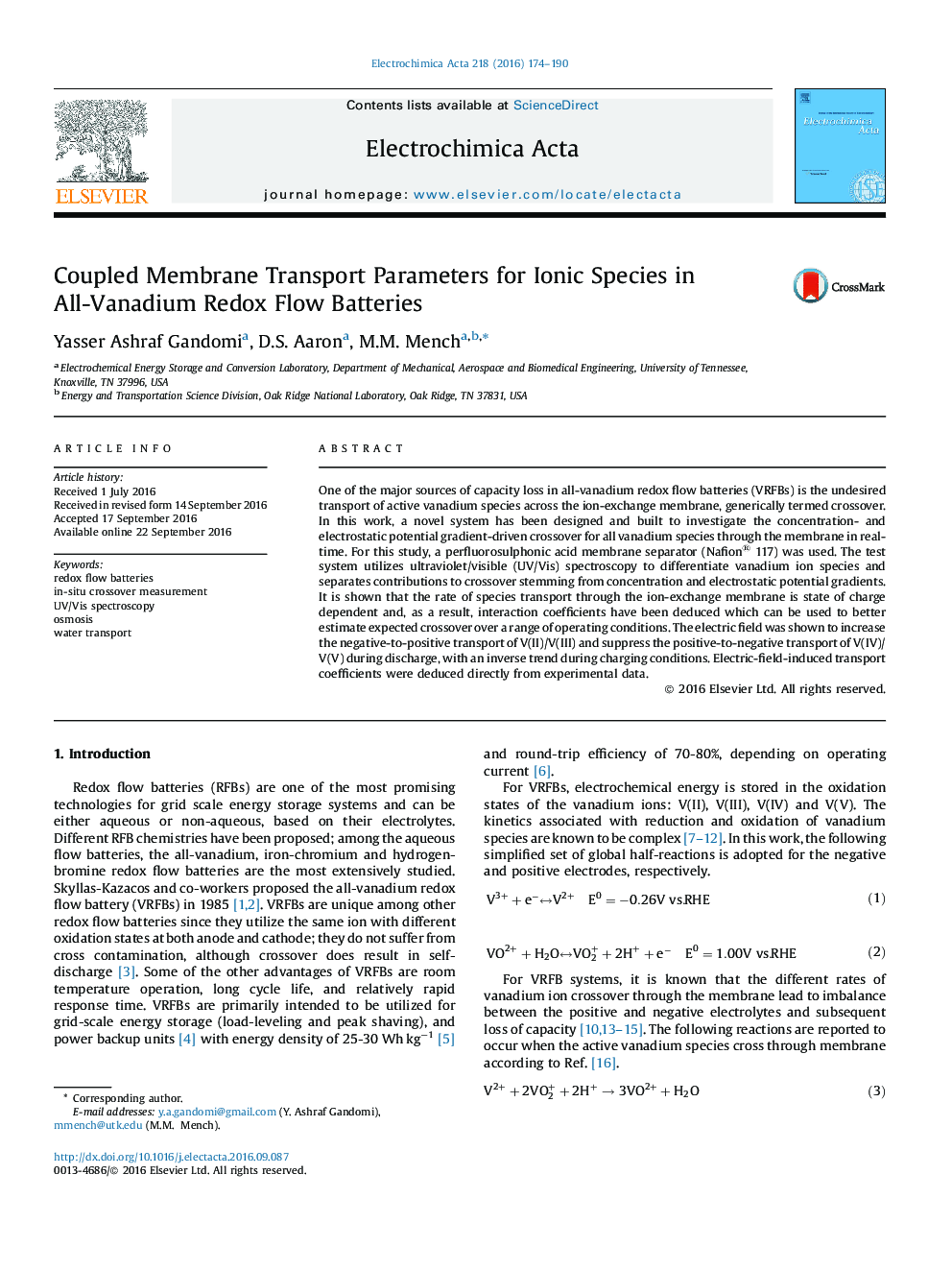| Article ID | Journal | Published Year | Pages | File Type |
|---|---|---|---|---|
| 4767657 | Electrochimica Acta | 2016 | 17 Pages |
Abstract
One of the major sources of capacity loss in all-vanadium redox flow batteries (VRFBs) is the undesired transport of active vanadium species across the ion-exchange membrane, generically termed crossover. In this work, a novel system has been designed and built to investigate the concentration- and electrostatic potential gradient-driven crossover for all vanadium species through the membrane in real-time. For this study, a perfluorosulphonic acid membrane separator (Nafion® 117) was used. The test system utilizes ultraviolet/visible (UV/Vis) spectroscopy to differentiate vanadium ion species and separates contributions to crossover stemming from concentration and electrostatic potential gradients. It is shown that the rate of species transport through the ion-exchange membrane is state of charge dependent and, as a result, interaction coefficients have been deduced which can be used to better estimate expected crossover over a range of operating conditions. The electric field was shown to increase the negative-to-positive transport of V(II)/V(III) and suppress the positive-to-negative transport of V(IV)/V(V) during discharge, with an inverse trend during charging conditions. Electric-field-induced transport coefficients were deduced directly from experimental data.
Related Topics
Physical Sciences and Engineering
Chemical Engineering
Chemical Engineering (General)
Authors
Yasser Ashraf Gandomi, D.S. Aaron, M.M. Mench,
